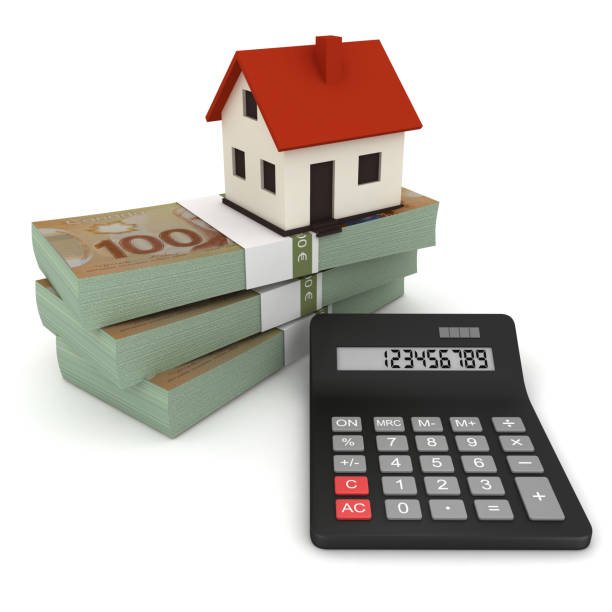
Learn to Calculate Your Loan-to-Value Ratio Today
If you’re thinking of buying a home, refinancing your mortgage, or tapping into your home equity, one term you’ll run into a lot is loan-to-value ratio (LTV). It’s a simple percentage, but it plays a massive role in the kind of mortgage you can get and whether you’ll need mortgage insurance.
In this article, we’ll break down how LTV works in Canada, how to calculate it, and why it matters when you’re exploring your mortgage options.
What Is Loan-to-Value (LTV)?
LTV is a ratio that compares how much money you’re borrowing to the value of the property you’re buying or refinancing. It’s expressed as a percentage, and lenders use it to assess risk.
For example, if you’re buying a $500,000 home and you have a $100,000 down payment, you’re borrowing $400,000. Your LTV would be:
($400,000 / $500,000) = 80%
The higher your LTV, the riskier your mortgage is seen by the lender. That’s why mortgages with LTVs above 80% require mortgage default insurance in Canada.
📏 What Is LTV – and Why It Matters in Canada
Your Loan-to-Value ratio (LTV) is a key factor lenders look at when deciding whether to approve your mortgage—and at what rate. Here’s what it is and why it matters:
📐 What Is LTV?
LTV is the ratio of your mortgage loan amount to the value of the property. It’s calculated like this:
LTV = (Loan Amount ÷ Appraised Property Value) × 100
Example: $400,000 loan ÷ $500,000 property = 80% LTV
🔑 Why It Matters
Lenders use LTV to assess your risk. A lower LTV means you have more equity—making you a safer borrower.
🏦 LTV & Mortgage Insurance
If your LTV is over 80%, mortgage default insurance (like CMHC) is required. This adds cost to your loan.
💸 LTV & Interest Rates
A lower LTV can help you qualify for better mortgage rates since it reduces lender risk.
📌 Tip: Want to lower your LTV? Increase your down payment, buy a more affordable home, or wait until you build more equity.
How to Calculate Your LTV
LTV = (Mortgage Amount / Property Value) x 100
The mortgage amount is your purchase price minus your down payment.
Let’s say:
- Purchase price: $700,000
- Down payment: $75,000
- Mortgage amount: $625,000
Your LTV = ($625,000 / $700,000) x 100 = 89.3%
This is a high-ratio mortgage, which means you’ll need mortgage insurance.
📊 Sample LTV Scenarios on a $500,000 Home Purchase
Here’s how your Loan-to-Value (LTV) ratio changes depending on your down payment amount when purchasing a $500,000 home:
| Down Payment | Mortgage Amount | LTV Ratio | Mortgage Insurance Required? |
|---|---|---|---|
| $25,000 (5%) | $475,000 | 95% | ✅ Yes – CMHC Required |
| $50,000 (10%) | $450,000 | 90% | ✅ Yes – CMHC Required |
| $75,000 (15%) | $425,000 | 85% | ✅ Yes – CMHC Required |
| $100,000 (20%) | $400,000 | 80% | ❌ No – Insurance Not Required |
| $150,000 (30%) | $350,000 | 70% | ❌ No – Insurance Not Required |
💡 Tip: A down payment of 20% or more not only lowers your LTV but also helps you avoid costly mortgage insurance premiums.
| Purchase Price | Down Payment | Mortgage Amount | LTV Ratio |
|---|---|---|---|
| $500,000 | $25,000 (5%) | $475,000 | 95% |
| $500,000 | $50,000 (10%) | $450,000 | 90% |
| $500,000 | $75,000 (15%) | $425,000 | 85% |
| $500,000 | $100,000 (20%) | $400,000 | 80% |
What Is a High-Ratio Mortgage?
A high-ratio mortgage is one where the LTV is more than 80%—meaning your down payment is less than 20%. These mortgages must be insured by one of Canada’s default mortgage insurers (like CMHC).
Why? Because a higher LTV means more risk for the lender.
You’ll pay an insurance premium (often added to your mortgage), but the good news is that insured mortgages often qualify for lower interest rates.
However, high-ratio mortgages also have restrictions:
- Maximum 25-year amortization
- Home price must be below $1,000,000
- You can’t refinance into a high-ratio mortgage
⚖️ Pros and Cons of High-Ratio Mortgages (LTV > 80%)
A high-ratio mortgage lets you buy a home with less than 20% down—but it also comes with trade-offs. Here’s a breakdown:
| ✅ Pros | ⚠️ Cons |
|---|---|
| Buy a home sooner with as little as 5% down | Must pay mortgage default insurance (CMHC, Sagen, etc.) |
| Lock in today’s price instead of waiting to save 20% | Insurance premiums increase total borrowing cost |
| More Canadians qualify due to flexible income rules under insured loans | You may be limited to a max amortization of 25 years |
| Insured rates are often lower than uninsured rates | Tougher stress test rules apply at approval |
📌 Tip: High-ratio mortgages are a great entry point for first-time buyers—but make sure you’re aware of the long-term cost impact from insurance premiums.
What Is a Low-Ratio Mortgage?
A low-ratio mortgage means your LTV is 80% or lower—you’ve put down at least 20% as a down payment.
These mortgages do not require insurance, and they typically come with more flexibility:
- Up to 30-year amortization
- Easier refinancing options
- Higher home price thresholds
But keep in mind—because they’re uninsured, some lenders may offer slightly higher interest rates or have stricter approval criteria (like requiring higher credit scores).
Low-ratio mortgages are ideal if you want long-term flexibility and don’t want to pay mortgage insurance.
Why Does LTV Matter?
Your LTV affects more than just your approval odds—it impacts:
- Whether you’ll need insurance
- Your interest rate
- What amortization terms you can choose
- Your ability to refinance or access a HELOC
Lenders assess your LTV every time you:
- Buy a home
- Renew or switch lenders
- Refinance
- Apply for a home equity line of credit (HELOC)
🔍 LTV Impact Calculator
Want to see how a higher down payment can affect your Loan-to-Value (LTV) ratio—and whether you’ll need mortgage insurance? Try our simple calculator:
Estimated LTV: 90%
🔐 Mortgage Insurance: Required
📌 Tip: Lowering your LTV to 80% or below eliminates insurance premiums and could unlock better interest rates.
Frequently Asked Questions
What’s the max LTV in Canada?
The highest LTV allowed is 95% for homes under $500,000. Between $500,000 and $999,999, your minimum down payment is 5% on the first $500K and 10% on the rest.
Can I get a HELOC with a high LTV?
Not usually. HELOCs are capped at 65% LTV. Your total mortgage and HELOC combined can’t exceed 80% LTV.
What’s the max LTV for a refinance?
Refinancing is limited to 80% LTV in Canada.
Is LTV based on appraised value or purchase price?
Whichever is lower. Lenders always use the more conservative number to calculate your LTV.
Final Thoughts
Your loan-to-value ratio is one of the most important numbers in your mortgage journey. It impacts the kind of mortgage you qualify for, how much insurance you need to pay, and what flexibility you’ll have down the line.
Know Your Loan-to-Value Ratio (LTV)?
Your LTV ratio affects how much you can borrow, your mortgage rate, and whether you’ll need insurance. Use our calculator — or talk to a mortgage expert to get your exact numbers and next steps. Get Help Calculating Your LTV Now
Stuck with a Mortgage Decision?
Don’t stress — our team is here to help. Reach out for free, no-obligation guidance.
Contact the Experts



